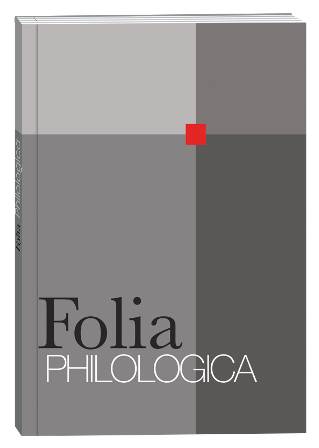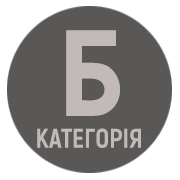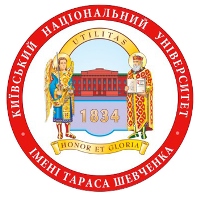MODERN MEDIA CULTURE AND ANTIQUITY: INTERTEXTUAL STRATEGIES IN THE EPISODE I, CARUMBUS OF THE ANIMATED SERIES THE SIMPSONS
DOI:
https://doi.org/10.17721/folia.philologica/2025/9/3Keywords:
Antiquity, intertextuality, allusion, reminiscence, Latin language, The Simpsons, receptionAbstract
The article examines the representation of classical heritage in the contemporary media space through the example of the animated series The Simpsons. Special attention is given to the analysis of historical allusions and linguistic strategies employed to create multi-layered cultural meanings. The aim of the study is to integrate linguistic analysis into traditional approaches to the study of classical reception, using as a case study the episode I, Carumbus. The research focuses on identifying how allusions, reminiscences, and linguistic elements related to the Roman history and culture function within the artistic strategy of a modern media product. Methodologically, the work combines intertextual and linguistic analysis, cultural commentary, and a comparison of the original English version with the Ukrainian dubbing. Particular attention is paid to the use of Latin expressions – both accurate and those containing grammatical or semantic errors – and their role in creating comedic, educational, or ironic effects. The scholarly novelty of the article lies in its focus on the linguistic dimension of classical representation, which remains underexplored in the context of animated series. For the first time, a detailed analysis is provided of linguistic strategies for integrating Latin, historical allusions, and reminiscences into the animated series, as well as instances of mistranslation or shifts in meaning. The findings demonstrate that the classical discourse in the series fulfils educational, didactic, ironic, and intertextual functions. Historical figures and events, adapted to contemporary storylines, create a distinctive cross-temporal dialogue. The use of linguistic devices – from allusions to well-known Latin maxims to parodic modifications – enhances the artistic effect and fosters cultural associations in the viewer. This approach reveals the multi-layered nature of classical interpretations in contemporary media and opens up prospects for further research into the linguistic dimension of cultural reception.
References
Pomeroy, A.J. (Ed.). (2017). A Companion to Ancient Greece and Rome on Screen. Wiley-Blackwell.
Renger, A.-B., & Solomon, J. (Eds). (2013). Ancient Worlds in Film and Television: Gender and the Politics. Brill. Retrieved from: https://library.oapen.org/handle/20.500.12657/43451.
Augoustakis, A., & Cyrino, M.S. (2022). Screening love and war in Troy: fall of a city. Bloomsbury Academic.
Blanshard, A.J.L., & Shahabudin, K. (2011). Classics on Screen: Ancient Greece and Rome on Film. Bristol Classical Press.
Marciniak, K. (Ed.). (2024). Chasing Mythical Beasts: The Reception of Ancient Monsters in Children’s and Young Adults’ Culture. Universitätsverlag Winter GmbH. Retrieved from: https://library.oapen.org/bitstream/id/e542d10b-87cc-4a5c-807f-a9c792e4d329/Chasing%20Mythical%20Beasts.pdf.
Augoustakis, A., & Raucci, S. (Eds.). (2018). Epic Heroes on Screen. Edinburgh University Press.
Foster, E. (2020). Myth Reimagined: The Ancient Hero in Postmodern Television. Journal of Classical Reception, 12 (2), 112–130.
Pourcq, M. de, Haan, N. de, & Rijser, D. (Eds.). (2020). Framing Classical Reception Studies : Different Perspectives on a Developing Field. Brill.
Abellán, I.C., Balbás, M.C. de la E., Pastor, E.D., Alcocer, M. del M.R., Lozano, D.S., & Huarte, N.T. (Coords.). (2020). Happily Ever Ancient: visions of antiquity for children in visual media. JAS Arqueología. Retrieved from: https://dialnet.unirioja.es/servlet/libro?codigo=826216.
Magerstädt, S. (2022). Revival of Mythic Epics or Epic Failure? On Gods and Heroes in the Television Shows Olympus (2015) and Troy: Fall of a City (2018). In Potter, A. & Gardner, H. (Eds.), The Ancient Epic in Film and Television. (“Screening Antiquity”) (pp. 119–134). Edinburgh University Press. https://doi.org/10.3366/edinburgh/9781474473743.003.0008.
Magerstädt, S. (2019). TV Antiquity: Swords, Sandals, Blood and Sand. Manchester University Press. https://doi.org/10.7228/manchester/9781784995324.001.0001.
Magerstädt, S., & Cyrino, M. S. (2023). Introduction: The Ancient Classical World from Film to Television. Journal of Popular Film and Television, 51.1, 2–7. https://doi.org/10.1080/01956051.2023.2171681.
Marciniak, K. (2024). The Modern Argonauts. Academia, 1/81, 66–69. https://doi.org/10.24425/academiaPAS.2024.150237.
Murnaghan, S. (2011). Classics for Cool Kids: Popular and Unpopular Versions of Antiquity for Children. The Classical World, 104 (3), 339–353. URL: http://www.jstor.org/stable/41303435.
Richards, J. (2008). Hollywood’s Ancient Worlds. Bloomsbury Publishing.
Cyrino, M.S. (Ed.). (2008). Rome Season One: History Makes Television. Blackwell Publishing Ltd. https://doi.org/10.1002/9781444301540.
Cyrino, M.S. (Ed.). (2015). Rome, Season Two: Trial and Triumph. Edinburgh. Edinburgh University Press.
Augoustakis, A., & Cyrino, M.S. (Eds.). (2017). Starz Spartacus: Reimagining an Icon on Screen. Edinburgh University Press. https://doi.org/10.3366/edinburgh/9781474407847.001.0001.
Stern, G. (2020). The Odyssey as Told on The Simpsons. In Abellán, I.C., Balbás, M.C. de la E., Pastor, E.D., Alcocer, M. del M.R., Lozano, D.S., Huarte, N.T. (Coords.), Happily Ever Ancient: visions of antiquity for children in visual media (pp. 177–187). JAS Arqueología. Retrieved from: https://dialnet.unirioja.es/servlet/articulo?codigo=8042654.
Potter, A. & Gardner, H. (Eds.). (2022). The Ancient Epic in Film and Television. (“Screening Antiquity”). Edinburgh University Press.
Elliott, A.B.R. (Ed.). (2014). The Return of the Epic Film: Genre, Aesthetics and History in the 21st Century. Edinburgh University Press. Retrieved from: https://www.jstor.org/stable/10.3366/j.ctt9qdr2s.
Baranova, S.V. (2019). Problemy perekladu form komichnoho ukrainskoiu movoiu (na materiali anhlomovnykh teleserialiv) [Problems of translating comic forms into Ukrainian (based on English-language television series)]. Naukovyi visnyk Mizhnarodnoho humanitarnoho universytetu – Scientific Bulletin of the International Humanitarian University, 40 (3), 62–65 [in Ukrainian]. Retrieved from: https://essuir.sumdu.edu.ua/handle/123456789/84970.
Bryukhovetska, L., & Kanivets, A. (2018). Ukrainska animatsiia [Ukrainian animation]: collection of articles. Fenix [in Ukrainian].
Dolnyk, I.M. (2020). Problemy perekladu vlasnykh imen v amerykanskykh animatsiinykh serialakh [Problems of translating proper names in American animated series]. In Fakhovyi ta khudozhnii pereklad: teoriia, metodolohiia, praktyka – Professional and literary translation: theory, methodology, practice (pp. 177–182). Agrar Media Group [in Ukrainian].
Hromiak, R.T., Kovaliv, Yu.I., & Teremko, V.I. (Eds.). (2007). Literaturoznavchyi slovnyk-dovidnyk [Literary Reference Dictionary]. Akademiia [in Ukrainian].
Pidhrushna, O.H. (2022). Movni ta pozamovni aspekty lokalizatsii multserialiv ukrainskoiu movoiu (na prykladi anhlomovnoho multserialu My Little Pony: Friendship Is Magic) [Linguistic and extralinguistic aspects of English animation series localization in Ukrainian (based on My little pony: Friendship is magic)]. Zakarpatski filolohichni studii – Transcarpathian Philological Studies, 2/25, 107–116. https://doi.org/10.32782/tps2663-4880/2022.25.2.20 [in Ukrainian].










